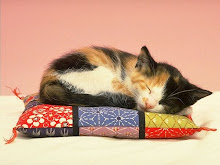EXCESSIVE thirst and urination are typical signs of diabetes in children, said University Malaya Medical Centre senior consultant paediatrician and paediatric endocrinologist Prof Dr Fatimah Harun.
"Babies and toddlers might urinate more frequently and parents may find themselves changing nappies more often than usual. When the nappies are left in the bathroom, they may find ants drawn to the nappies. Older children can also complain of bed-wetting, which parents might mistake for stress."
For children and adolescents with Type 1 diabetes, weight loss is also an indication.
Over time, she said, the children would become lethargic. They would become dehydrated, inactive and very ill. They would also complain of abdominal pain, vomiting and rapid breathing.
This was because the body was producing a lot of ketones in an attempt to get alternative energy from the breakdown of body fats.
"The final phase will be a state where there is a severe lack of insulin termed DKA or diabetic ketoacidosis. Patients will be drowsy and become unconscious. This is a state of medical emergency. Almost 78 per cent of our patients come in at this late stage."
Dr Fatimah said more often than not, health professionals tended to not recognise diabetes in children even when the symptoms were present. DKA, for instance, could be assumed to be more common childhood conditions such as pneumonia, food poisoning, appendicitis or meningitis.
Type 2 diabetes had an insidious onset and milder symptoms, said Universiti Kebangsaan Malaysia Medical Centre senior consultant paediatrician and paediatric endocrinologist Professor Dr Wu Loo Ling.
Hence, she said, many of the affected children were not brought in for medical advice early.
Besides having similar symptoms as Type 1, she said children with Type 2 may have recurrent skin infections such as boils and, in girls, vaginal itch and fungal infection.
Severe weight loss was not common among Type 2 patients. Instead, they were usually overweight, she said.
University Malaya Centre paediatric endocrinologist Dr Muhammad Yazid Jalaludin said another sign of Type 2 diabetes was a skin condition called acanthosis nigricans. It was often mistaken for dirt.
Many children have this condition, so parents should watch for this.
It is characterised by a patch of extremely dark and rippled skin and usually found on the neck, underarm and groin.
"Babies and toddlers might urinate more frequently and parents may find themselves changing nappies more often than usual. When the nappies are left in the bathroom, they may find ants drawn to the nappies. Older children can also complain of bed-wetting, which parents might mistake for stress."
For children and adolescents with Type 1 diabetes, weight loss is also an indication.
Over time, she said, the children would become lethargic. They would become dehydrated, inactive and very ill. They would also complain of abdominal pain, vomiting and rapid breathing.
This was because the body was producing a lot of ketones in an attempt to get alternative energy from the breakdown of body fats.
"The final phase will be a state where there is a severe lack of insulin termed DKA or diabetic ketoacidosis. Patients will be drowsy and become unconscious. This is a state of medical emergency. Almost 78 per cent of our patients come in at this late stage."
Dr Fatimah said more often than not, health professionals tended to not recognise diabetes in children even when the symptoms were present. DKA, for instance, could be assumed to be more common childhood conditions such as pneumonia, food poisoning, appendicitis or meningitis.
Type 2 diabetes had an insidious onset and milder symptoms, said Universiti Kebangsaan Malaysia Medical Centre senior consultant paediatrician and paediatric endocrinologist Professor Dr Wu Loo Ling.
Hence, she said, many of the affected children were not brought in for medical advice early.
Besides having similar symptoms as Type 1, she said children with Type 2 may have recurrent skin infections such as boils and, in girls, vaginal itch and fungal infection.
Severe weight loss was not common among Type 2 patients. Instead, they were usually overweight, she said.
University Malaya Centre paediatric endocrinologist Dr Muhammad Yazid Jalaludin said another sign of Type 2 diabetes was a skin condition called acanthosis nigricans. It was often mistaken for dirt.
Many children have this condition, so parents should watch for this.
It is characterised by a patch of extremely dark and rippled skin and usually found on the neck, underarm and groin.
